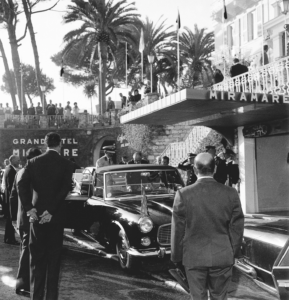Genoa has a tendentially conflictual relationship with modernity. When the urban landscape of public housing on a national scale was profoundly impacted by Italian Law No. 43 of 28 February 1949, which gave rise to the INA-Casa plan, Genoa found its own demiurge of Lecorbusian descent in Luigi Carlo Daneri.
The current measure, called Superbonus 110%, launched during the first traumatic lockdown period by the Conte government on May 1, 2020, even if praiseworthy because aimed at addressing the employment crisis in the building sector caused by the pandemic and to encourage energy efficiency and safety of our homes, does not contain any social utopia whose future could become a mockery.
Quite different, however, was the post-war law proposed by Amintore Fanfani, Minister of Labor and Social Security in the Christian Democrat government of Alcide De Gasperi, that aimed to increase workers’ employment and, at the same time, to facilitate the construction of houses for workers
The money for the INA-Casa plan came in part from ERP (European Recovery Program or Marshall Plan) funds, and in part, in the first seven years – the plan lasted a total of fourteen years, until 1963 – from a deduction of 0.60% from the monthly salary of workers and 1.20% from employers, in solidarity towards the most vulnerable parties.

The INA-Casa plan was based on Keynesian reformism, but also on Christian solidarity, Olivettian communitarianism and communist collectivism. Before being passed, the law was discussed for eight months in Parliament during what is remembered as one of the most heated periods of the First Republic. Finally, 334 billion lire were invested to build the città pubblica (public city), based on the idea of citizenship and solidarity. As many as 20,000 construction sites were opened throughout the peninsula, providing work for 41,000 construction workers per year. Of the 17,000 architects and engineers working in Italy at the time, a third were involved in the project including, to name just a few, Gio Ponti, Ignazio Gardella, Franco Albini, Ettore Sottsass, BBPR, Carlo Mollino and Ludovico Quaroni. Artists such as Alberto Burri, Piero Dorazio, Tommaso Cascella, and Duilio Cambellotti were also involved in the creation of the INA-Casa polychrome ceramic tiles affixed on the buildings after final inspection. A total of 40,000 tiles were made.

In Genoa, for INA-Casa Luigi Carlo Daneri realized, from 1950 to 1953, the buildings of the Bernabò Brea complex, between the districts of Sturla and Albaro, consisting of 368 housing units; in the following two years, the settlement of Mura degli Angeli on the heights of Sampierdarena; and finally, between 1956 and 1967, the huge INA-Casa district of Forte Quezzi, intended to accommodate 4,500 inhabitants distributed in 894 housing units. In realizing the Forte Quezzi district, Daneri headed a team of thirty-five architects, and five long houses were built following the hill’s curved contour line. The largest, Block A, renamed “Biscione” (Big Snake) and whose construction was supervised directly by Daneri, is a six-storey building, 540 meters in length. On the third floor, it is traversed by an internal road which creates an architectural promenade.






